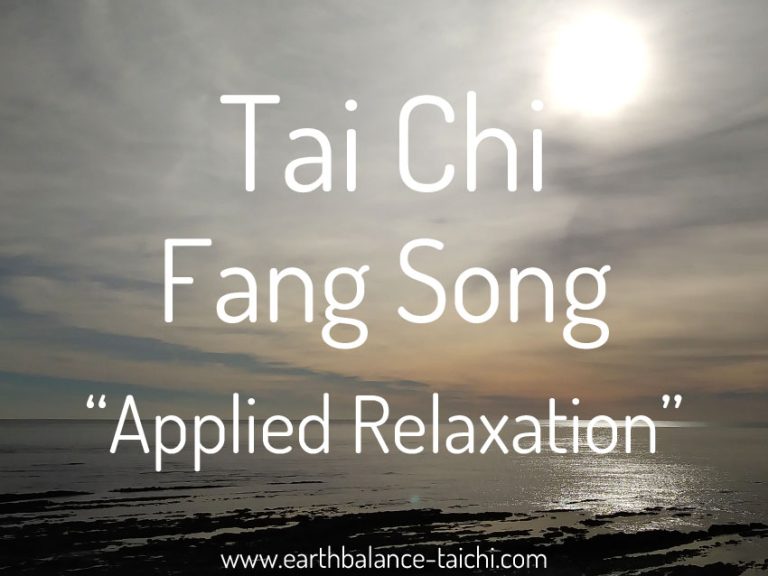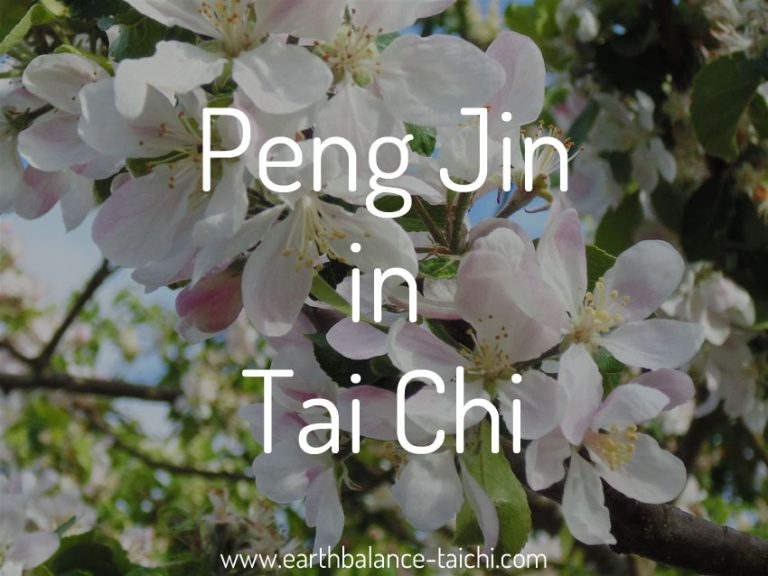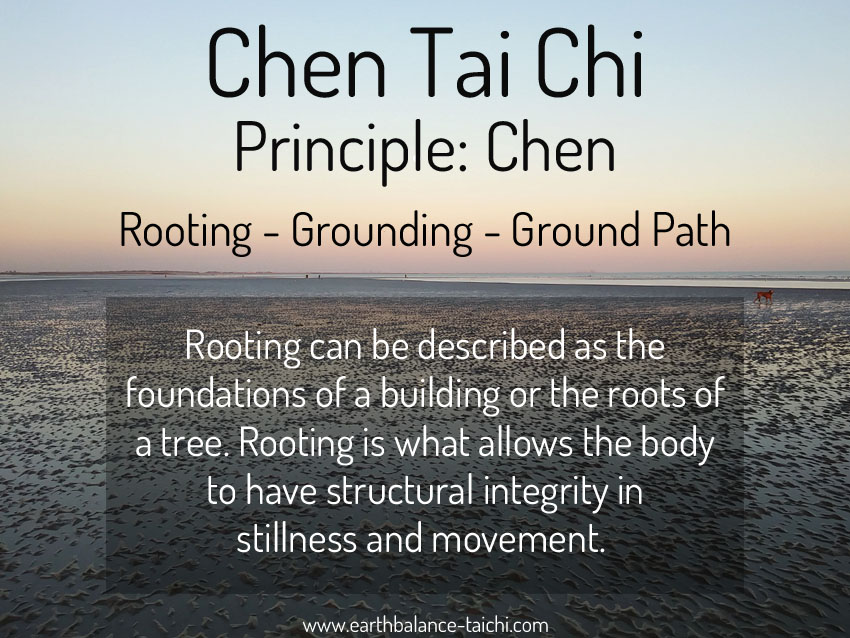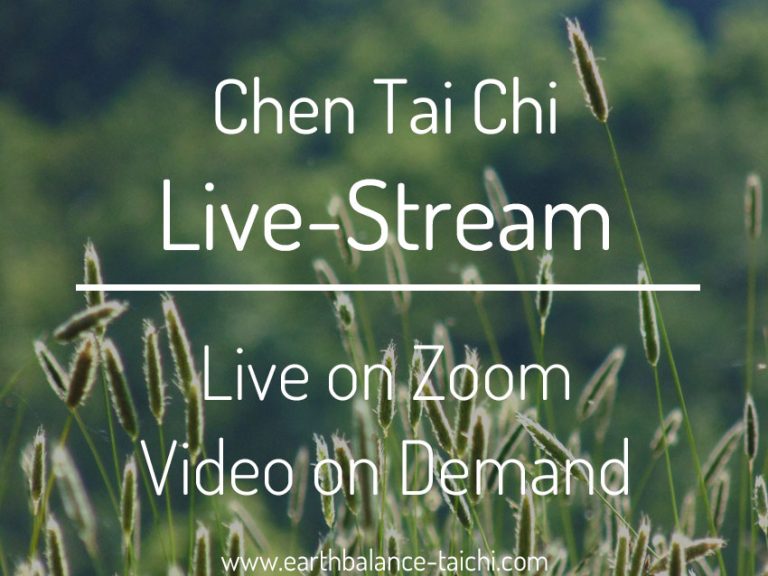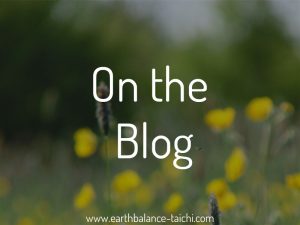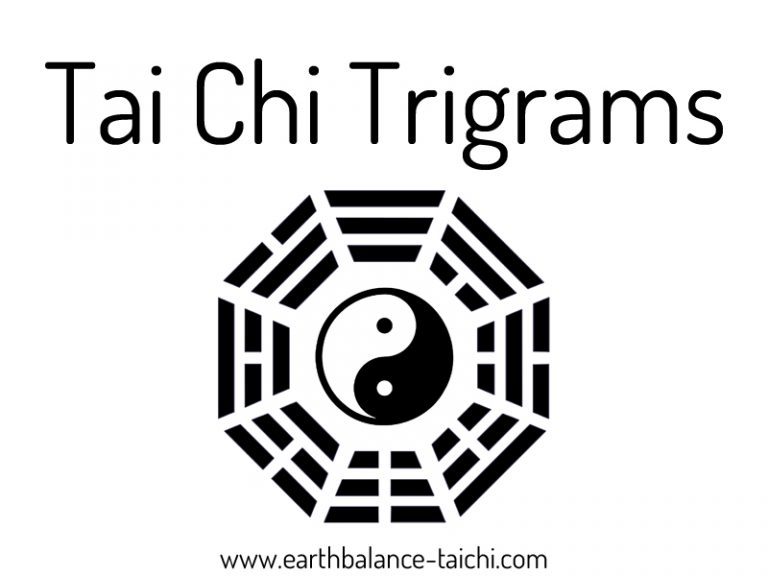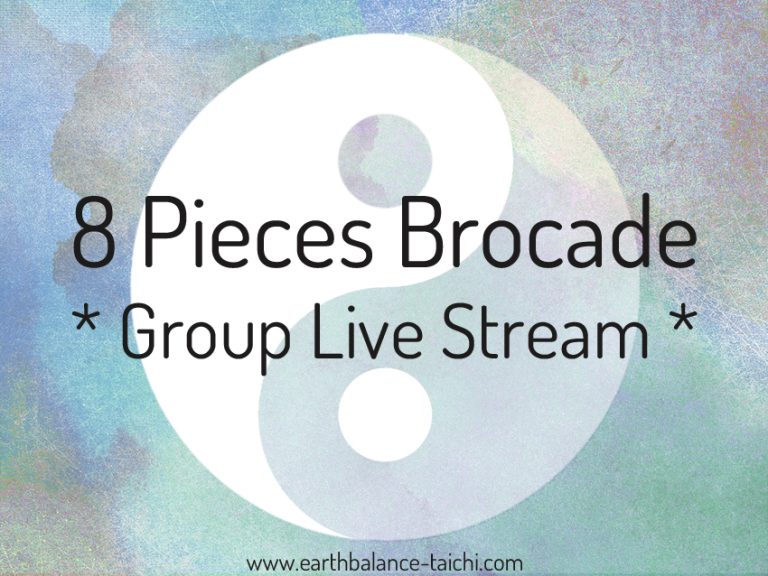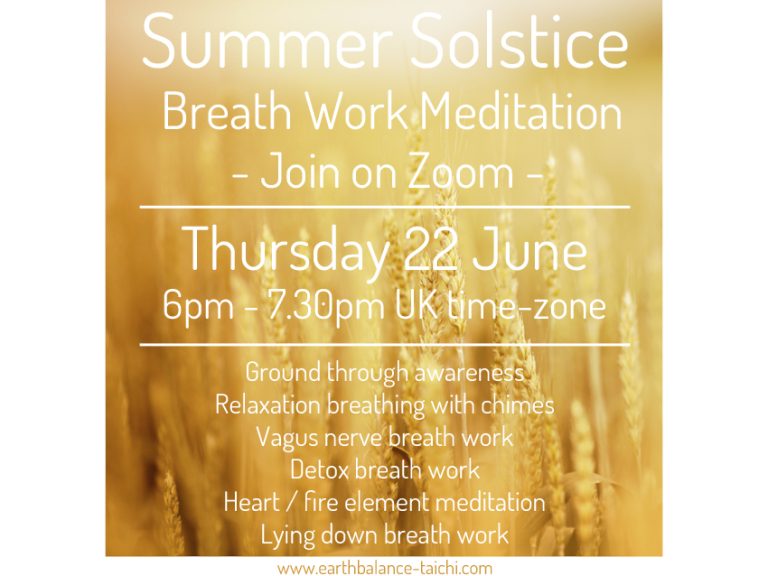Rooting in Tai Chi

Rooting in Tai Chi
One of the main principles in Chen Tai Chi training is rooting / grounding / sinking / balancing. This principle combines three concepts:
- Chen (pronounced chuen) which means rooting and sinking Qi to Dantian
- Zhongding which means central equilibrium, stable and balanced.
- Song which means applied relaxation.
Without a root there is no Tai Chi. Your root can be described as the foundations of a building or the roots of a tree. Rooting is what allows the body to have structural integrity in stillness and movement. The other two main principles are peng jin (expansive spiralling) and fang song (applied relaxation). Chen does not refer to the family name Chen in Chen Tai Chi, it means rooting or sinking and is a principle found in all traditional Tai Chi forms including the Chen family lineage.
Rooting
Rooting creates a heavy quality within the lower body. The feet sink or root into the earth, like tree roots growing deeply into the ground. It is also the action of sinking your body weight down. This is achieved by sinking into a kua (hip) squat, lowering your centre of gravity, loosening the joints and sinking Qi to Dantian. When rooting, maintain your alignment, an upright body, stability in your structure and an expansive spiralling lengthening quality without locking the joints . From this the feet and legs may feel heavy weighted pressure, with more weight in the lower body than the upper.
Start by finding the feet in stillness. In taiji posture in standing practice (Zhan Zhuang) bring your mind’s eye down to the feet. Feel the feet connecting to the ground. Feel the pressure transferring through the feet to the ground. Balance that pressure, too little will uproot you, and too much will cause tension.
In rooting the lower body has 60% of the weight, and the upper body has 40% of the weight. This can be described as yin yang. Yin is the lower body, taking on the quality of water, being fluid, weighted and drawing down. Yang is the upper body, taking on the quality of fire, being light, uplifting and expansive. Consider that there is always yin at the height of yang, and there is always yang at the depths of yin. Nothing is absolute. This method balances water and fire, called Kan and Li in Chinese. When practising rooting in the form, it adds a fluid heaviness. Be like water.
- As with all principles, correct alignment is key to the principle rooting working. A poorly aligned body will uproot your centre making you vulnerable to incoming force. Whether leaning to one side, raising the pelvis, collapsing the spine etc., stabilising the posture is a key part to rooting development.
- Rooting requires sinking into a kua squat and loosening of the shoulders, lower back and hip joints to enable the weight of your body to transfer to the ground. If your skeleton is out of alignment the weight of your body will get stuck in a joint, meaning you cannot root as the weight is held in the body.
- The pelvis must be in a neutral position, neither tipped forwards which over arches your lower back, nor thrusted forwards.
- Rooting requires the knees to be in line with the toes/feet, not rolled inwards or outwards.
- The head, neck and spine must be straight spine, not collapsed or rounded.
- The shoulders are over the hips, not collapsed or rounded forwards. Sometimes this can be described as head over heart, heart over pelvis.
- The weight of your body must be well aligned over your feet and heels e.g. not too far forwards with the knees over the toes.
- The feet must be flat to the floor, with connection across the three balls of the feet; heel, behind big toe and behind little toe. Weight can be 70% on the heels or equalized between the three balls of the feet.
Uprooting
Uprooting usually comes from raising the hips up to high, to take the pressure off the legs. This moves your centre of gravity upwards, moving the joints towards a more straight posture, and disconnects the elastic quality in the connective tissue. This destabilises your structure. If uprooted you will not be able to absorb or rebound force.
Over rooting
Like the other principles, it is possible to over root, which creates too much heaviness in the lower body. The quality of this is like becoming stuck down in a posture, without flexibility and the ability to rebound. This is the opposite end range of motion, and has the same effect as uprooting. This is seen when students try to mimic the posture of their teacher and over do it, as their body is not capable of that posture. A fine balance must be sought between being uprooted and over rooted.
Ground Path / Grounding Defence / Ground Reaction Force (GRF)
Rooting in Tai Chi Chuan does not stop there. Once a root has been established, this needs upgrading to become complete. In Tai Chi and Qigong, often we work with equal and opposing force. Ground path is rooting paired with an equal opposing pressure into the upper body. This pressure is generated from the ground via the heel, spiralling through the legs, centre and arms to the opposite hand, wrist, elbow or shoulder. Lifting the toes up does not uproot if the three balls of the foot are connected.
What does this achieve? In physics, when you push a solid mass e.g. the ground or a wall, the ground pushes back in the opposite direction you pushed from. This is called ground force reaction. Try this by pushing a finger against a wall. As you push force into the wall, the wall pushes back and this pushes your body backwards. This occurs with all land vertebrates. The ground path uses GRF to connect the ground to an upper body joint. You must have an equal opposite connection to remain rooted. Equal pressure is needed to balance the connection, otherwise the dominant pressure will uproot you. Maintaining the ground path means there is dynamic pressure throughout your movements.
You can try this by standing side onto a wall, in a Chen Tai Chi front silk reeling stance with one palm raised to shoulder height with a standing palm. Connect the foot to the heel of the palm with equal and opposing pressure. Then step away from the wall and connect the foot to the heel of the palm without pressing into a wall.
It is also possible to establish the ground path from the foot to the opposing hip. With practice you can also apply ground path to both feet and both arms.
Force Transferring to the Ground
In Tai Chi Chuan, as a martial art we have to learn how to absorb, transfer, redirect and create force / strength / power / pressure.
Incoming force must be always be transferred to the ground. The body must be well aligned, with the principles peng jin (expansive spiralling) and fang song (applied relaxation) present. Your take your opponents incoming force and ground it. The joints must be loosened to enable incoming force to transfer and be absorbed into the ground. Any tension in the structure means pressure gets stuck somewhere in the body.
When creating force, the strength comes from the body mechanics. This uses GRF which pushes and spirals from the ground out to the limbs. This is not mystical force, it is purely body mechanics.
If you hold muscular tension, tight joints and inflexible connective tissue, then you cannot achieve a root or the ground path. If your structure is collapsed and floppy, then you cannot achieve a root or the ground path.
Training Rooting in Static Postures
When training standing practice (Zhan Zhuang), take time to develop rooting and the ground path. Once you have aligned the posture from the feet to the top of the head, establish fang song and peng jin. Once these feel comfortable and you begin to settle into stillness, find your feet as mentioned earlier in this article, and then progress onto developing your root, and then onto the ground path, especially when the arms are in the embracing posture. This requires you to become an observer of the internal body.
Training Rooting in Moving Drills & Form
Shifting weight in your Tai Chi movements is an ever changing cycle of yin yang. When the weight is centre, with equal weight on each leg this is balanced yin yang. When shifting 70% of the weight into one leg, this leg is considered yang, full or active. The other leg with 30% of the weight is considered yin, empty or passive. This also applies to empty stances with a 90% yang leg, and 10% yin leg. Single leg stances when one leg is lifted up is 100% weighted, the top of yang. As you develop your form choreography and quality of movements, you will naturally become aware of the connections between changing yin yang qualities in the lower body.
In silk reeling drills, the weight shift is driven by pushing the foot into the ground. That force must not uproot your centre of gravity, which is when the hips or structure raises upwards. The pressure from the ground must be transferred through your relaxed squatting posture and neutrally aligned pelvis to the other leg. This helps to maintain rooting.
When developing the ground path, shift your focus from the weighted leg, to the empty leg. It’s the empty leg that maintains the ground path. Practise weight shifting and transferring the ground path from side to side. Then develop opposites by connecting the ground path to the wrists/palms.
In your form, to start developing rooting and the ground path, train them separately focusing on the key movements and poses. Over time with practice, you will start to develop rooting throughout. It will naturally come and go as your focus changes. Skills fade can be expected when you are learning or developing other principles. Rooting and the ground path are skills that take a long time to learn and digest, they are difficult to achieve and hard to maintain. You will notice they are easy to drop when the mind is distracted.
